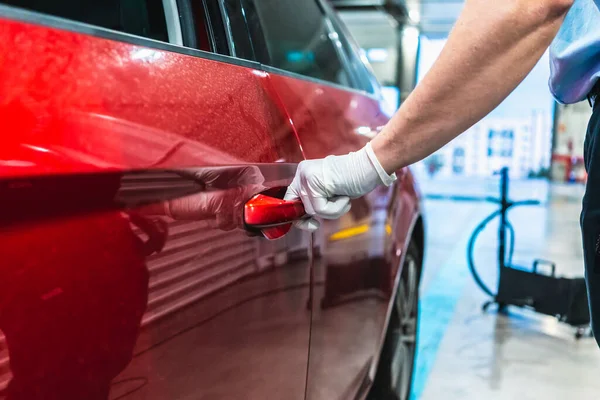Beyond The Surface: Understanding The Structural Integrity Of Auto Body Repairs
In the realm of automotive repair, appearances can be deceiving. While a fresh coat of paint may hide the scars of an accident, it's what lies beneath the surface that truly determines the integrity of a vehicle. The structural components of an automobile are paramount to its safety and performance, making it essential for both consumers and professionals to delve deeper into the intricacies of auto body repairs.
The Foundation: Structural Components of an Automobile
Automobiles are marvels of engineering, comprising a complex network of structural elements designed to withstand various forces encountered on the road. From the chassis to the frame, each component plays a crucial role in maintaining the vehicle's integrity. However, in the event of a collision, these components can sustain damage, compromising both safety and functionality. Go through this webpage for more information.
The Impact of Collisions on Structural Integrity
When a vehicle is involved in a collision, the forces exerted can deform or weaken its structural components. This includes the frame, which provides the backbone of the automobile, as well as critical safety features such as crumple zones and side-impact beams. Even seemingly minor accidents can cause hidden damage, affecting the vehicle's ability to protect occupants in future collisions.

The Role of Auto Body Repairs
Auto body repairs are the unsung heroes of the automotive world, quietly ensuring that vehicles not only look good but also remain safe and functional on the road. Here are five key roles that auto body repairs play in keeping vehicles roadworthy:
- Structural Integrity: Auto body repairs are crucial for restoring the structural integrity of vehicles that have been damaged in accidents or collisions. From straightening frame rails to repairing structural components, skilled technicians ensure that the vehicle's framework is robust and capable of providing adequate protection to occupants.
- Safety Enhancement: Beyond aesthetics, auto body repairs address safety concerns by rectifying structural damage and replacing compromised components. By restoring the vehicle to its pre-damage condition, repairs minimize the risk of further injury in the event of another collision, ensuring the safety of both the driver and passengers.
- Performance Optimization: Damaged body panels or components can negatively impact a vehicle's performance, affecting everything from aerodynamics to fuel efficiency. Auto body repairs aim to optimize performance by repairing or replacing damaged parts, ensuring that the vehicle maintains its agility, handling, and fuel economy.
- Preservation of Resale Value: The appearance of a vehicle significantly influences its resale value. Auto body repairs play a pivotal role in preserving resale value by restoring the vehicle's exterior appearance to its original condition. A well-maintained vehicle with minimal visible damage commands a higher resale price, benefiting owners in the long run.
- Customer Satisfaction: Lastly, auto body repairs contribute to customer satisfaction by instilling confidence in the safety, performance, and appearance of the vehicle. A meticulously repaired vehicle not only meets but exceeds the expectations of owners, providing peace of mind and satisfaction.
In essence, auto body repairs are more than just cosmetic enhancements; they are essential for maintaining the structural integrity, safety, performance, resale value, and customer satisfaction of vehicles. Behind every expertly repaired dent or scratch lies a commitment to excellence and a dedication to keeping vehicles roadworthy for years to come.
The Importance of Proper Repair Techniques
Repairing structural damage requires more than cosmetic enhancements. It demands a meticulous approach that addresses both visible and hidden issues to ensure the vehicle's structural integrity is fully restored. Unfortunately, not all repair shops adhere to these standards, potentially putting the safety of drivers and passengers at risk.

Quality Control in Auto Body Repairs
To maintain structural integrity, repair shops must follow rigorous procedures outlined by manufacturers and industry standards. This includes conducting thorough inspections to identify all damage, using genuine replacement parts, and employing skilled technicians trained in proper repair techniques. Additionally, advanced technologies such as computerized measuring systems and welders are employed to precisely align and reinforce structural components.
The Risks of Substandard Repairs
Cutting corners in auto body repairs can have severe consequences. While a quick fix may seem convenient, it can compromise the structural integrity of the vehicle, leading to potential safety hazards down the road. Weak welds, improper alignment, and inadequate reinforcement are just a few examples of substandard repairs that can increase the risk of injury in future accidents.
Detecting Substandard Repairs
Identifying substandard repairs can be challenging, as the flaws are often hidden beneath layers of paint and filler. However, there are telltale signs that consumers can watch for, including uneven panel gaps, mismatched paint, and unusual noises while driving. Additionally, obtaining a comprehensive inspection by a certified technician can uncover hidden issues that may have been overlooked during the initial repair process.
The Role of Certification and Regulation
In an effort to uphold industry standards and protect consumers, certification programs and regulatory bodies have been established to oversee the auto repair industry. These organizations set forth guidelines for training, equipment, and ethical practices, ensuring that repair shops adhere to the highest standards of quality and safety.
Choosing a Reputable Repair Shop
When selecting an auto body repair shop, consumers should prioritize certifications and accreditations from recognized organizations such as the Automotive Service Excellence (ASE) and the Inter-Industry Conference on Auto Collision Repair (I-CAR). Additionally, seeking referrals from trusted sources and reviewing customer feedback can provide valuable insight into the reputation and reliability of a repair facility.

